
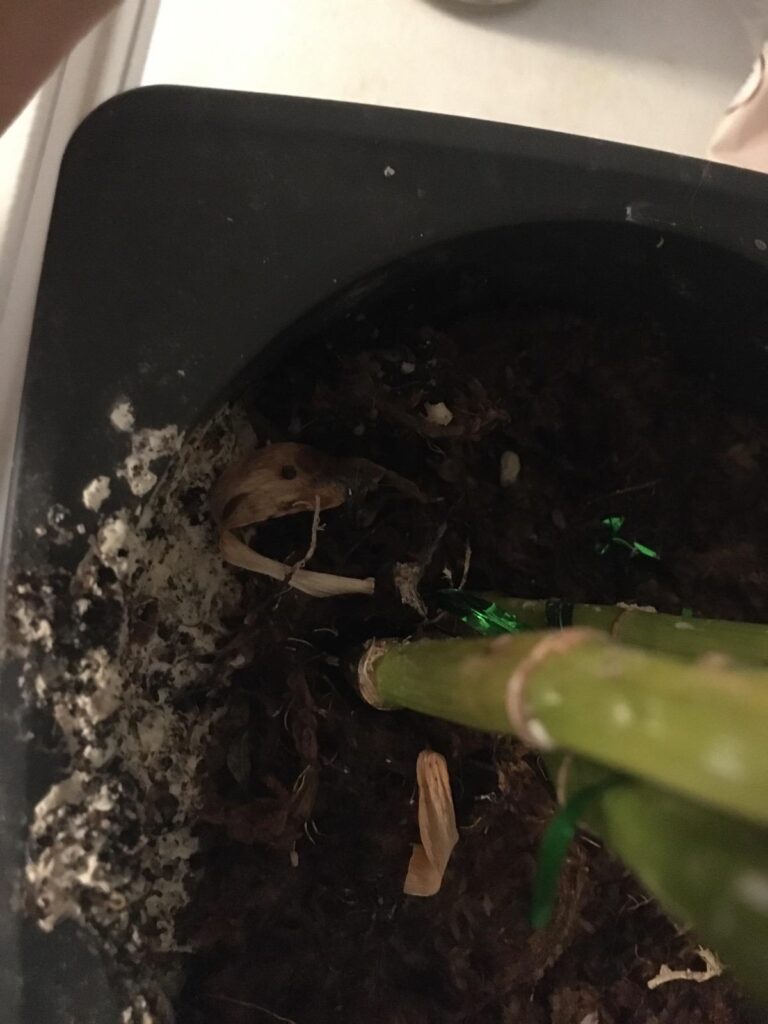


Senior-ish foster kitty, available for adoption to someone patient and calm who will be available for constant snuggling and extra care.


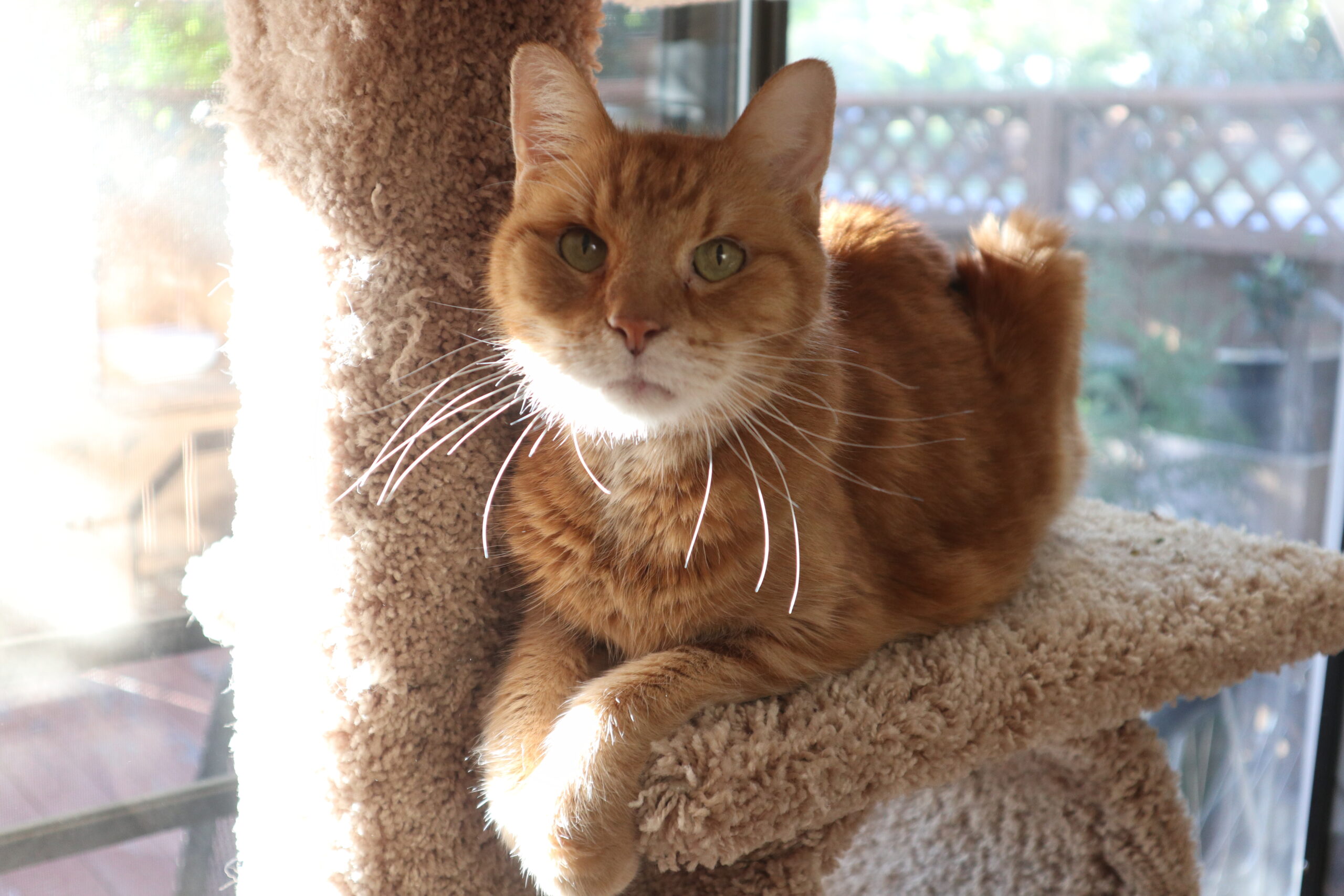
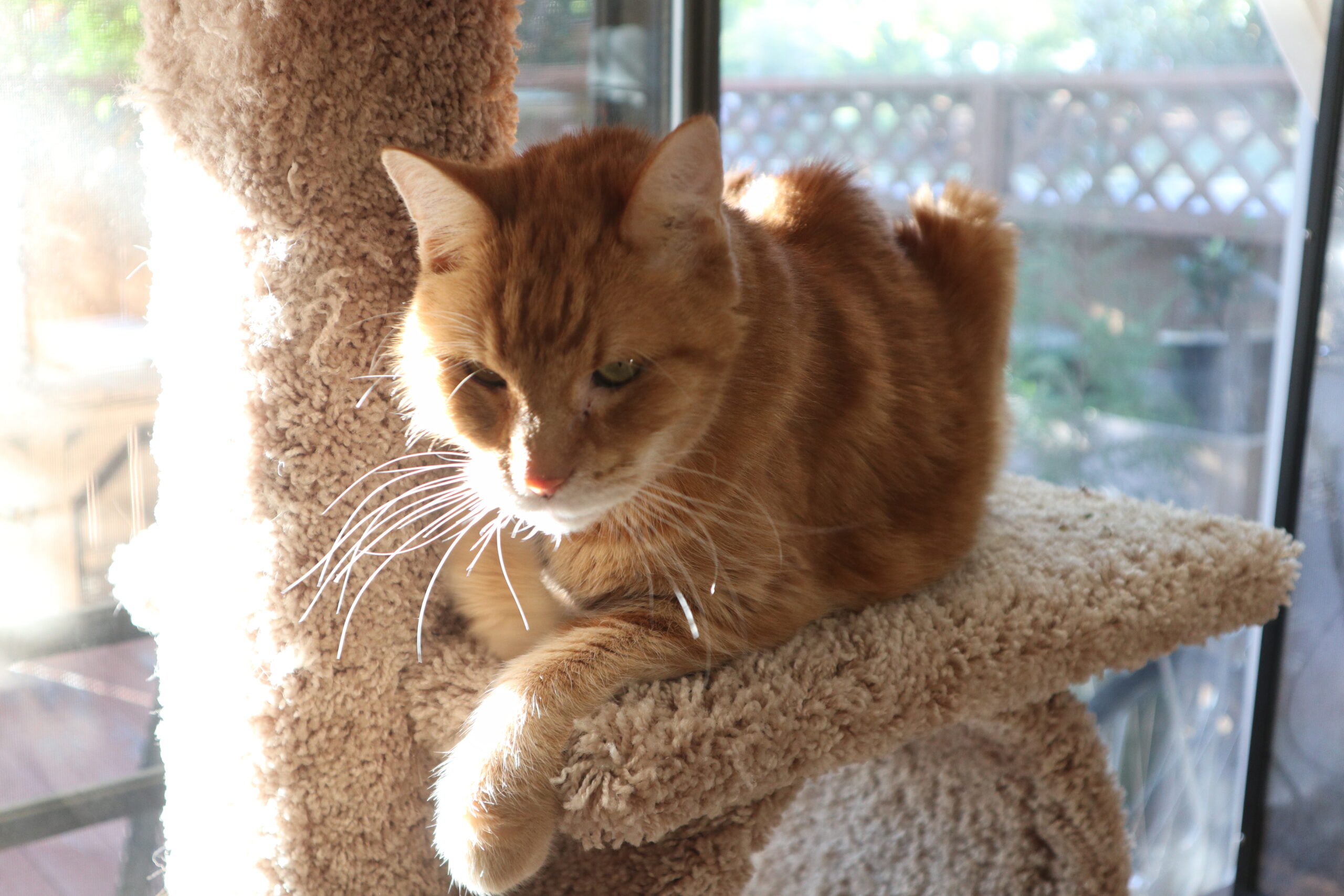
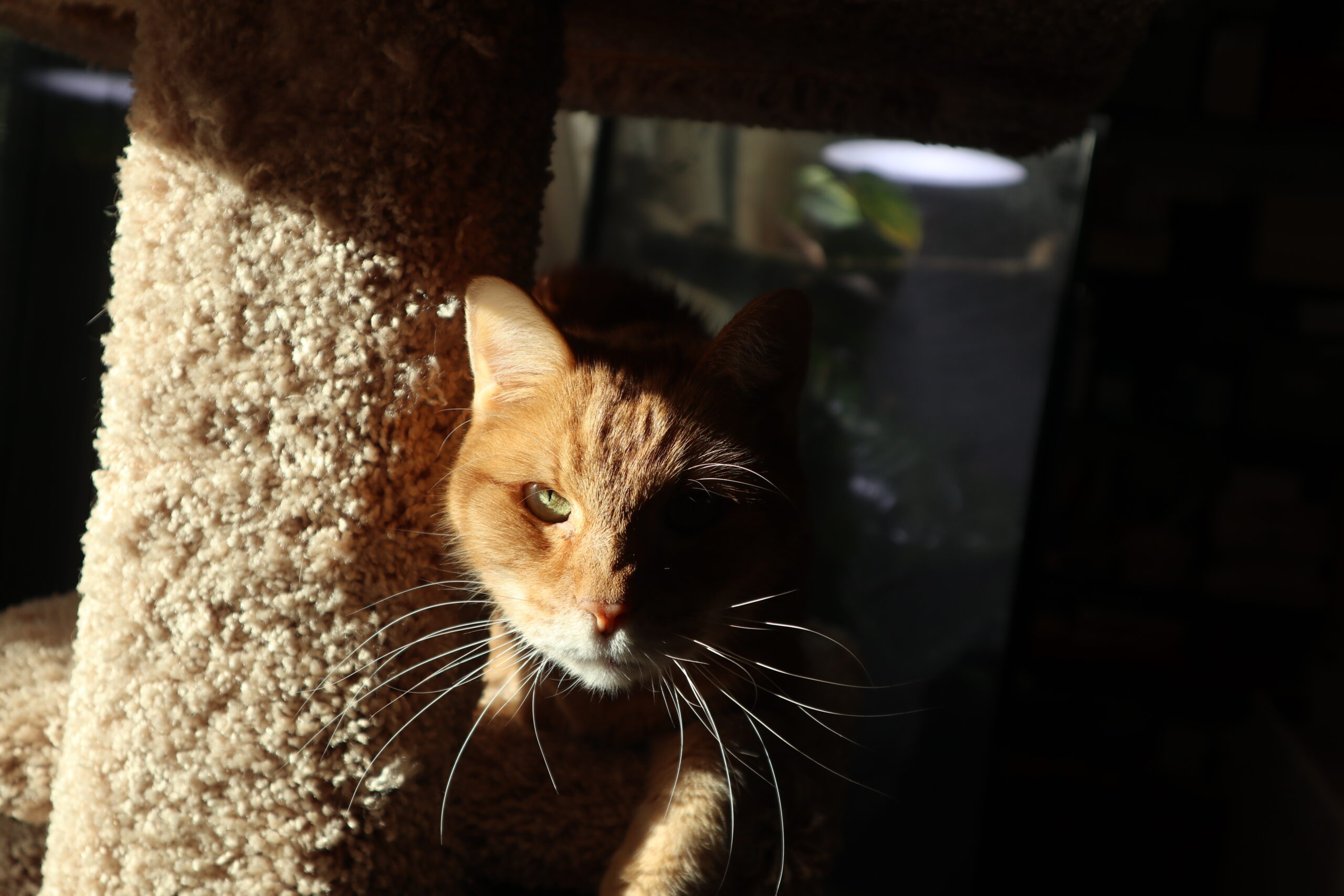
Jonathan was born in the summer of 2009, and was brought to us by Eliana of Independent Animal Rescue. He was our first foster kitten, along with his brother and sister Jack and Eliza. He was the shyest one, and the one that took the longest to accept petting; he was “hand shy” and would duck his head for the longest time.
He warmed up, though. He loved affection, loved people, and loved my lap more than anything. I felt especially protective of him: he was emotionally intense, worried a lot, and passionate about being with his human. He’d hide at any rumbling sound, but would come out quickly to a friendly voice and hand.
Photo record of world’s most pregnant shrimp:
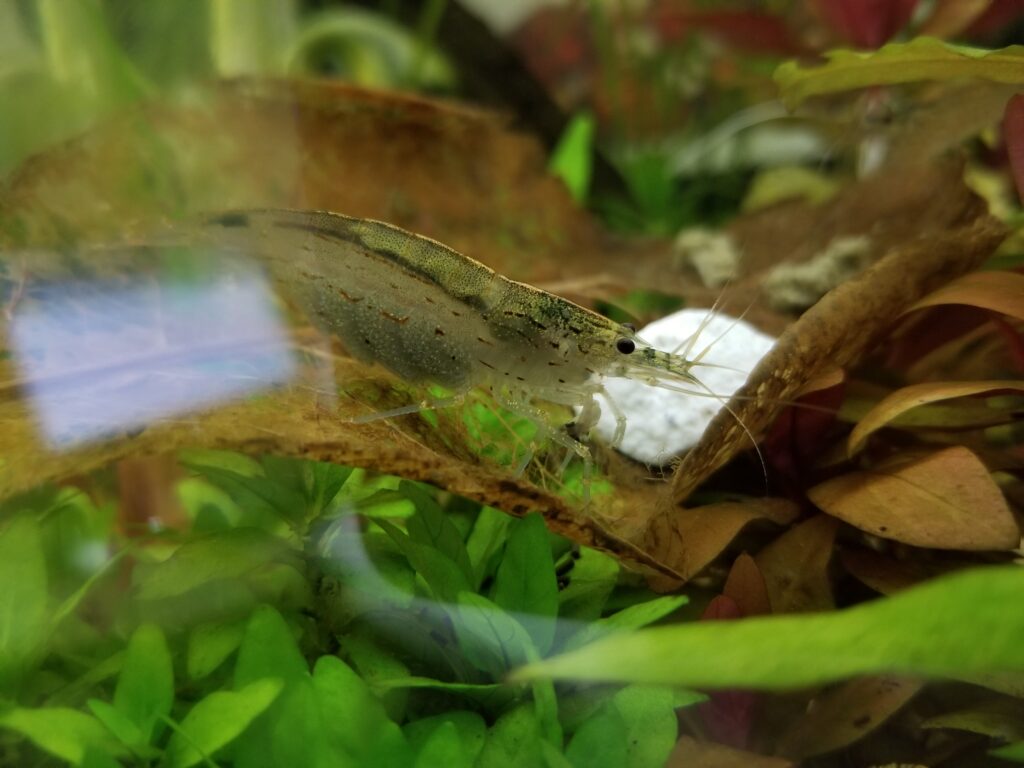
View this one full size to see the sparkles:

Photo record of a pretty shrimp:

Plants from culture:
From seed:
Things I learned were OK for fish, not OK for shrimp: API “Algae Fix”; anything made of copper (copper is sometimes used as a natural antibacterial agent, but it’s not good for crustaceans); some organic produce, since a copper solution is sometimes used as a natural anti-mold agent; probably mosquito bits/bacillus thurigiensis.
Some aquarists inject CO2 into the water for the plants’ benefit. Instead, I just set up the pump/tubing to output slightly above the water, so that the stream would trickle down and mix in some air (I also had the aquarium in my bedroom with the idea that it might emit some oxygen at night). I have no idea if any of this worked.
Indian almond leaves need to hang out in the tank for a week or two before the shrimp will start eating them; maybe they just soften in the water, maybe they get algae growing on them. The shrimp love hiding under them once the leaves are waterlogged enough to sink toward the bottom.
I never purchased a “shrimp tube” (glass/easy to clean fixture to make feeding the shrimp easier). They look cool.
The flat white rock-like thing is a piece of cuttle bone that a Petco employee gave me so I didn’t have to purchase a whole cuttle bone.
Re: the little brown dome: the biggest / eternally “pregnant” shrimp can fit in some of the holes, not in others. It’s kind of an experience to watch her try.
It did seem that when I started feeding the shrimp less / almost not at all, they did eat the environmental algae more. Which was their original job: eat the algae growing on the plants. I just worried about them and probably started feeding them too many bits of algae wafer.
One is supposed to remove uneaten food, but it’s hard when your shrimp are scuttling away with it and hiding it among the plants.
I found mosquito larvae in the tank a couple of times. Wished I’d had fish to eat them! Was easy to fish them out with the baster tool.
The reddish/rough rocks are from a bag of landscaping lava rock (Home Depot or Lowe’s). I washed and boiled them before adding. While the iron content is probably good for plants, and the shrimp like to walk on them, I’m not sure they are safe for smooth/normal fish — I think I read that rough rocks like that could be a problem.
Foods rejected by these shrimp: omnivore shrimp food, bottom feeder shrimp pellets, various tadpole foods, random multicolored fish flakes I got as a free sample.
Foods accepted by these shrimp: algae wafers originally purchased for tadpoles, softening Indian almond leaves, naturally growing aquarium algae (apparently, they often do need other food to supplement the naturally growing algae).
Here are some images of a hexagonal terrarium. These are 22″ high.




Here are some images of a tall screen terrarium. The sides and front panels are lined with plastic; the top is lined with mosquito netting. These are 36″ high.
Although the bottom tray is only about 2″ deep, I found a small 48 GPH pump that can work with very shallow water.


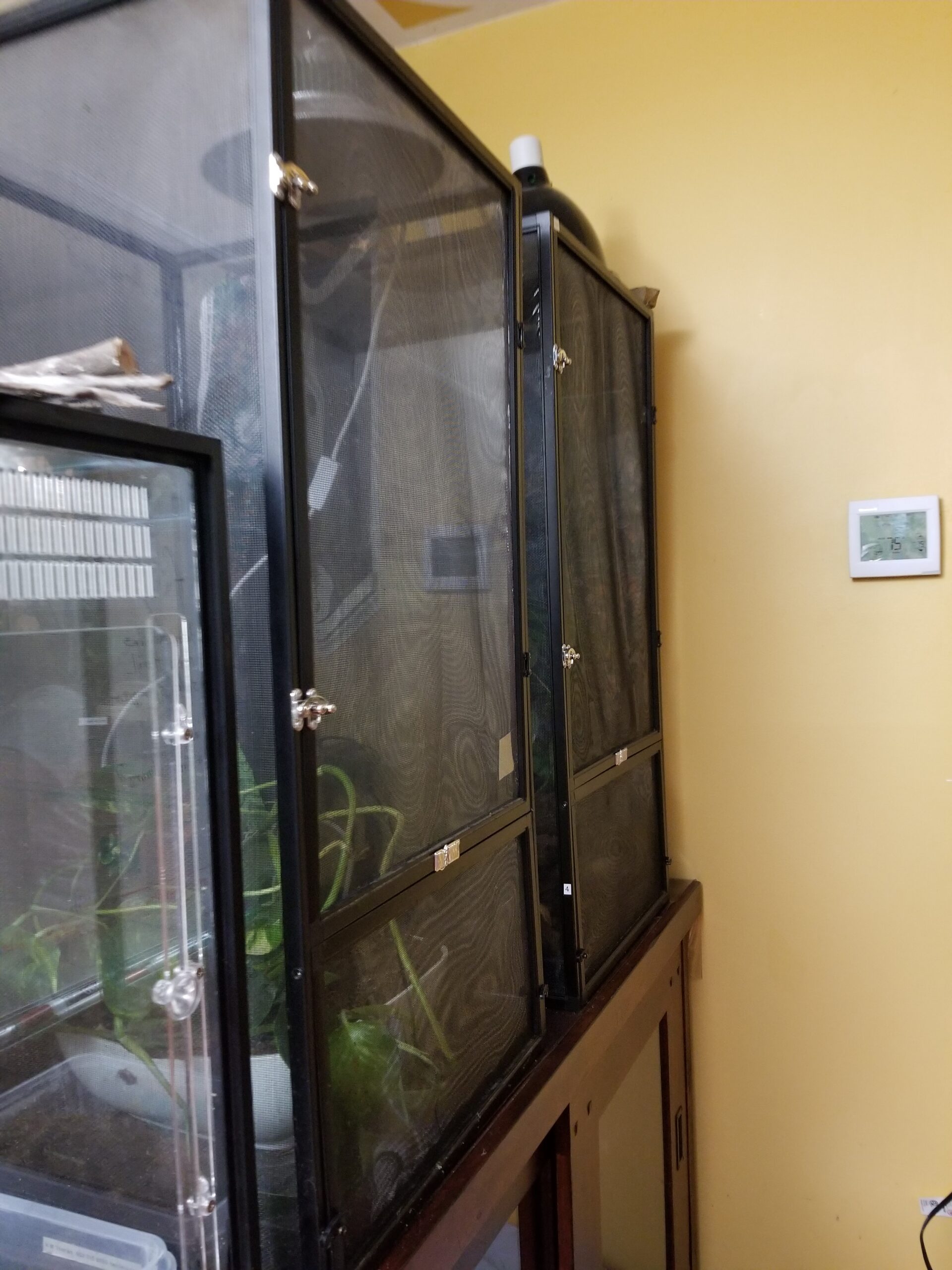
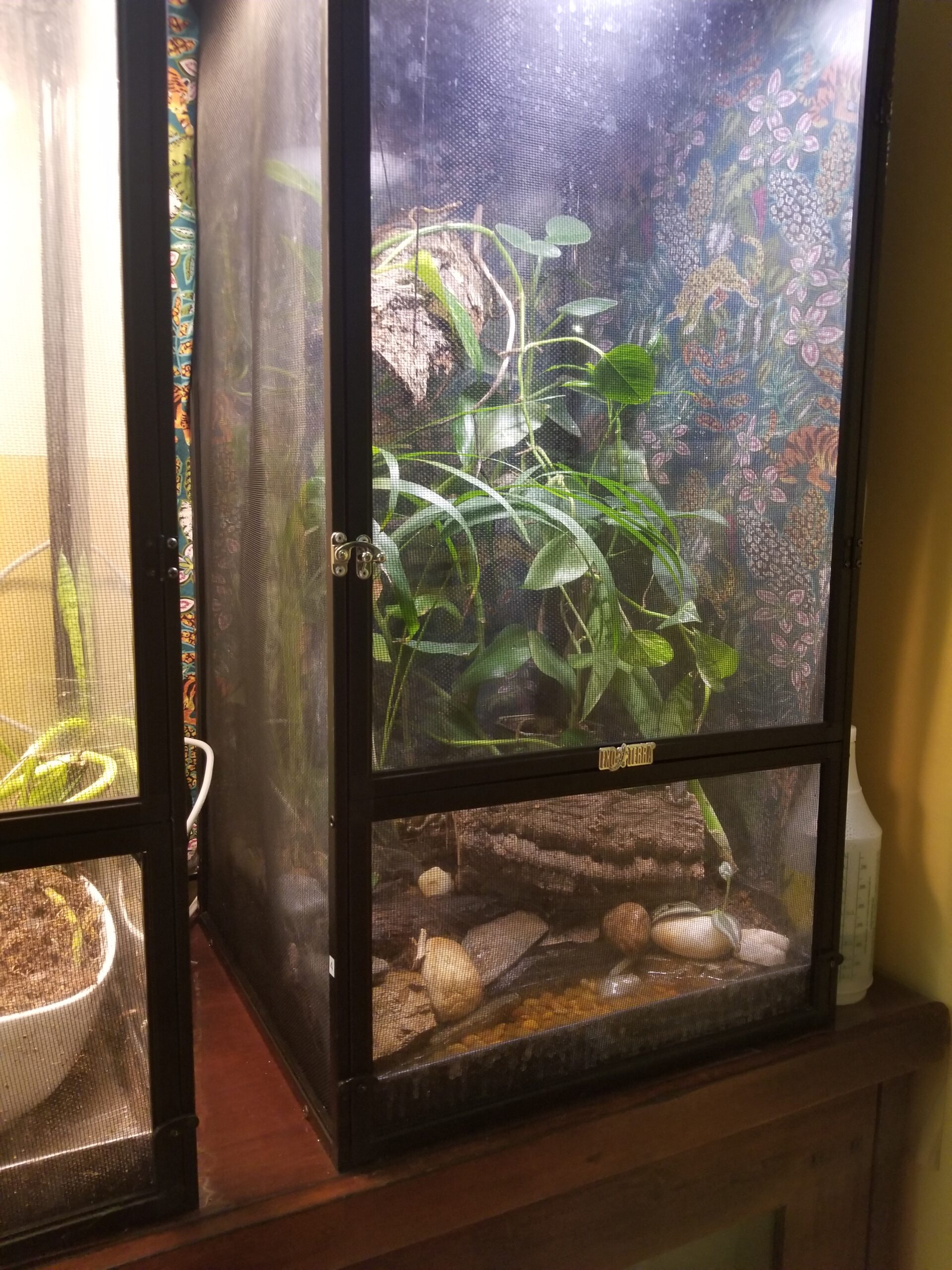
This short clip just barely shows the moving water feature — that’s within a plastic tray that’s about 2″ deep, but there’s still about 1″ between the water surface and the top of the tray — no danger of overflow unless someone adds way too much water (or messes with the hose or something).
Evan

Welcome to WordPress. This is your first post. Edit or delete it, then start writing!